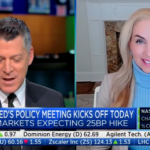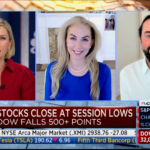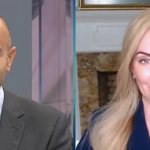How Wall Street Can Help Catalyze Climate Action: Investment Opportunities from The Global Carbon Allowance Market

A revolution on Wall Street could help shape the revolution in energy and the environment that we desperately need to safeguard the health and future of our planet.
Two years ago, CEO Larry Fink’s annual letter to investors described the climate crisis as something which would trigger a “fundamental reshaping of finance.” Ever since, we’ve seen green shoots of hope: companies like Microsoft have pledged to go “carbon negative” by 2030, establishing a billion-dollar fund for carbon removal technologies. Experts tell us that the solar sector could account for 22 million jobs by 2050, energy storage could support 4.5 million workers, and wind energy could constitute 1.5 million in a future scenario where the world reaches 100% renewable by 2050.
That’s the good news. The bad news is that the world and the marketplace aren’t moving fast enough to do what science tells us we must do. Between 2007 and 2014, more than $73 billion of public finance was approved for overseas coal, led by Japan and China. The International Energy Agency (IEA) projects $322 billion per year will be invested in renewables through 2025, compared with $116 billion per year into fossil fuel plants. By 2030 there will be a “climate finance gap” of $2.5-$4.8 trillion USD by 2030. In order to close this gap, an additional $166 to $322 billion USD in clean infrastructure per year will be needed on top of current levels of investment.
The best way to catalyze action and compliment progress by ambitious government actors is to make climate-friendly private sector investments even more attractive – by putting a global price on carbon pollution.
That’s where a revolution on Wall Street can put us in striking distance of doing in time what science tells us must be done.
I’ve been working with Former Secretary of State John Kerry, Nobel Prize-winning economist, Robert Engle, Krane Funds Advisors, Climate Finance Partners, and IHS Markit, on a new way to help investors do well and do good at the same time. We have created the first global price for a ton of carbon emissions by combining the three largest carbon emission market prices into one global price. We’ve worked with IHS Markit to create the Global Carbon Index, which offers broad coverage of cap-and-trade carbon allowances by tracking the most traded carbon credit futures contracts. Currently, the index covers the major European and North American cap-and-trade programs: European Union Allowances (EUA), California Carbon Allowances (CCA), and the Regional Greenhouse Gas Initiative (RGGI).
In other words, it’s an ESG or impact investment creating a new global price for carbon emissions. It will give governments, companies and investors a benchmark to estimate the cost of their carbon footprint as well as incentivize further reductions in pollution and carbon emissions.
Why is this so important? The World Bank, the Intergovernmental Panel on Climate Change (IPCC), and many other organizations estimate that the price of a ton of carbon needs to reach at least $100 over the next decade, if the global community is to meet the targets of the Paris Climate Accords. KRBN creates the first US-listed ETF to Establish a Global Price for Carbon Emissions.*
We live in a complicated world, and there will be no “one size fits all” solutions to a challenge as enormous as global climate change. Governments will have to do more, from the federal government down to the states and cities which have lead in the last four years when the federal government was absent. But there’s no solution that beats the ticking clock of climate tipping points that doesn’t count on a marketplace transformation to push the curve of investment and climate-smart finance. Using every tool in our collective toolboxes is essential. We know that “there’s no Planet B;” empowering the marketplace must be part of everyone’s Plan A for action.
- 1.*Data from Bloomberg as of 7/20/2020
Eron Bloomgarden is a Partner at Climate Finance Partners and a Professor of sustainable finance at Columbia University’s Earth Institute. Eron is an expert in environmental finance, green infrastructure, and impact investing and provides market intelligence and advice to investors on Climate Finance products.
The KRBN ETF is distributed by SEI Investments Distribution Company (SIDCO), 1 Freedom Valley Drive, Oaks, PA 19456, which is not affiliated with Krane Funds Advisors, LLC, the Investment Adviser for the Fund, Climate Finance Partners, the Co-Advisor for the Fund, or IHS Markit.



















